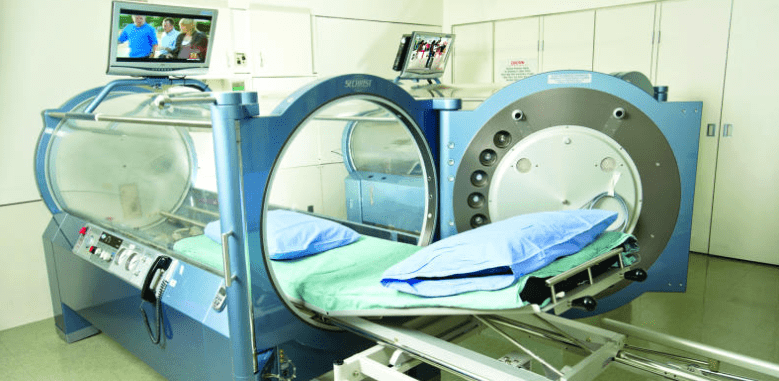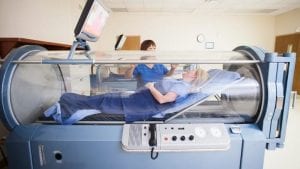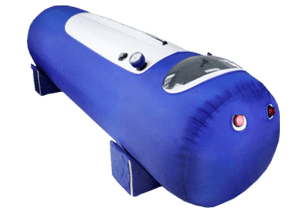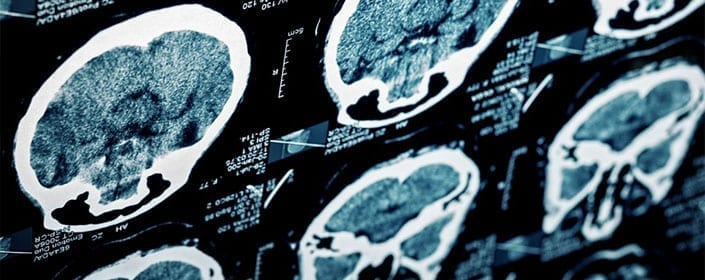
by admin | Aug 2, 2018 | Hyperbaric Oxygen Therapy, Stem Cell Research, Stem Cell Therapy, Studies
While most approaches to stem therapy involve infusing purified stem cells into the body, Thom and fellow researchers have shown that hyperbaric oxygen therapy (HBOT) is capable of stimulating the body to produce its own stem cells. Thom, Heyboer, and co-authors have extended this work by showing that by slightly increasing the pressures used during hyperbaric oxygen therapy, one can significantly increase the number of stem cells produced.
In his original work, Thom and colleagues showed that a single, two-hour session of 2.0 atmospheres (atm) pressure (twice the air pressure we normally feel at sea level) was capable of doubling the number of stem cells in the bloodstream. Twenty treatments increased stem cell levels by 800%. To study this phenomenon more closely, Thom’s research group recruited 20 patients to undergo hyperbaric oxygen treatment, some at the original 2.0 atm pressure, and some at 2.5 atm. The primary goal of this research was to find out whether a higher pressure was capable of eliciting a greater number of cells.
As before, treatment with 2.0 atm of hyperbaric oxygen substantially increased the number of stem cells found in the blood. However, treatment with 2.5 atm doubled or even tripled the number of stem cells produced compared to the 2.0 atm treatment session. In other words, a slightly higher pressure causes the body to produce substantially more of its own stem cells.
Researchers focused on two types of stem cells, in particular, CD34+ and CD45-dim—markers that appear on stem cells and/or progenitor cells. They are primarily found on cells in the bone marrow. Stem cells with CD45-dim generally go on to become bone, blood, or blood vessel cells, while CD34+ cells can differentiate into almost any cell. Hyperbaric oxygen therapy is thought to stimulate the bone marrow to produce and release these stem cells into the bloodstream, which is the reason these treatments raise stem cell levels in the blood.
The results published by Thom and coworkers suggest that patients who wish to enhance the number of stem cells should consider undergoing hyperbaric oxygen therapy. Furthermore, the greatest number of stem cells was observed after 20 treatment sessions, suggesting that a greater effect occurs with more treatments.

by admin | Jul 10, 2018 | Hyperbaric Oxygen Therapy, Stem Cell Research, Stem Cell Therapy, Traumatic Brain Injury
A technique called hyperbaric oxygen therapy (HBOT) has been shown to help patients with traumatic brain injury (TBI) who are suffering from a chronic neurological injury. HBOT appears to confer its benefits to these patients by increasing the neuroplasticity in the brain – or, in other words, by making it easier for the brain to re-wire itself. When the brain has a higher degree of neuroplasticity, it is easier to recover from neurological injuries because the brain can find ways to re-wire and restore functions that were lost due to damage to brain tissue.
A new study, published in Frontiers in Human Neuroscience, investigated the effects of HBOT on prolonged post-concussion syndrome (PPCS) that occurs as a result of TBI. The researchers used imaging strategies to monitor the brains of 15 patients with PPCS and evaluated the patients with tests of cognition. The researchers gave each patient 60 treatments with HBOT. The treatments were initiated anywhere from 6 months to 27 years after the patients had sustained their injuries.
Using imaging techniques called Dynamic Susceptibility Contrast-Enhanced and Diffusion Tensor Imaging (DTI) MR sequences, the researchers observed that HBOT increased blood flow and volume in the brain and that it led to the generation of new blood vessels. Using various cognitive tests, the researchers also found that HBOT improved memory, information processing speed, and executive functions.
Based on these findings, the researchers concluded that HBOT is beneficial for patients with TBI by inducing neuroplasticity in the brain, improving the integrity of microstructures of both white and gray matter within the brain, and allowing for the regeneration of nerve fibers. Future research will help clarify further benefits of HBOT and how the brain responds to this treatment.

by admin | Jul 3, 2018 | Health Awareness, Hyperbaric Oxygen Therapy, Stem Cell Therapy
Hyperbaric Oxygen Therapy (HBOT) is a powerful treatment used to aid in the healing of many conditions and illnesses. Individuals who undergo this unique form of therapy sit in a controlled environment, called a chamber, with higher levels of oxygen and increased atmospheric pressure. Together, the pressure and high oxygen concentration help to oxygenate the blood, which can facilitate cellular regeneration, healing of wounds, and decreases in inflammation levels. The therapy can treat burns and sores, concussions, sports injuries, and decompression syndrome, among other ailments.
In fact, the benefits of HBOT span so far and wide that some individuals have even sought to bring the treatment into their own homes. This is done using soft HBOT chambers, which are different from the hard medical-grade chambers that are operated by professionals in treatment centers. Here, we walk you through the key differences between hard and soft chambers to help you make informed decisions about your treatment options.
Hard HBOT Chambers
To understand the most crit ical differences among hard and soft chambers, it’s important to revisit the two key principles of HBOT: oxygen and pressure. Combining these two factors to facilitate an environment in which expedited healing can take place is what makes this form of therapy so effective. In hard chambers, the air features 100% medical-grade oxygen and is commonly pressurized to a maximum atmospheric absolute (ATA) of up to 3.0, or a depth of 66 feet. They are specifically built to achieve pressures for therapeutic purposes, and some can go to 6.0 ATA.
ical differences among hard and soft chambers, it’s important to revisit the two key principles of HBOT: oxygen and pressure. Combining these two factors to facilitate an environment in which expedited healing can take place is what makes this form of therapy so effective. In hard chambers, the air features 100% medical-grade oxygen and is commonly pressurized to a maximum atmospheric absolute (ATA) of up to 3.0, or a depth of 66 feet. They are specifically built to achieve pressures for therapeutic purposes, and some can go to 6.0 ATA.
The immense level of healing achieved through these systems is backed by thousands of clinical studies and has even been shown to aid in bone and tissue regrowth. Conditions that have shown benefit with HBOT in conjunction with stem cell therapy are Multiple Sclerosis, Traumatic Brain Injury, Post-Stroke, and Sports Injuries to name a few. This is because hard chamber HBOT can mobilize stem cells (CD34+ pluripotent cells) responsible for the regrowth of significantly wounded areas. Hard HBOT chambers can also kill harmful bacteria.
Because these hard-sided chambers are found only in medical or therapy centers and controlled by trained professionals, the risks of breathing contaminated or polluted air are mitigated. In addition, hard chambers meet the American Society of Mechanical Engineers Pressure Vessels for Human Occupancy (ASME-PVHO-1) standard. However, because it is illegal to purchase medical-grade oxygen without a prescription, this form of therapy can only be received under the care of specialists.
Soft-Sided HBOT Chambers
Unlike hard-side d chambers, soft-sided HBOT chambers are portable and can be purchased for home use. They typically feature a steel frame with a zipped inflatable chamber. Oftentimes, they are used as a temporary treatment for divers and mountain climbers suffering from decompression syndrome and altitude sickness when they are already in route to receive HBOT in a hard chamber. On the surface, soft HBOT chambers might seem like a convenient alternative to receiving therapy at a treatment center. Yet, research shows that these solutions are ineffective for achieving the same level of benefits provided by hard chambers, and in fact, using them can put patients at risk.
d chambers, soft-sided HBOT chambers are portable and can be purchased for home use. They typically feature a steel frame with a zipped inflatable chamber. Oftentimes, they are used as a temporary treatment for divers and mountain climbers suffering from decompression syndrome and altitude sickness when they are already in route to receive HBOT in a hard chamber. On the surface, soft HBOT chambers might seem like a convenient alternative to receiving therapy at a treatment center. Yet, research shows that these solutions are ineffective for achieving the same level of benefits provided by hard chambers, and in fact, using them can put patients at risk.
Let’s return to the two components needed for effective HBOT: oxygen and pressure. While the air in hard chambers is 100% medical-grade oxygen, soft chambers used at home feature regular ambient air, with just 21% oxygen. Plus, they can only be pressurized to 1.3 ATA, or a depth of roughly eight feet. This lower pressure level is simply not enough to facilitate healing. Used in conjunction with 100% oxygen (which again, can only be administered by medical professionals), it can be used as a temporary treatment for altitude sickness and decompression syndrome – but that is all the FDA approves soft-sided HBOT chambers for. Therefore, they serve little purpose in the home setting. In fact, it isn’t recommended for soft chambers to be used for any type of healing outside of treating the two conditions described above. Not only are the oxygen and pressure levels too low to achieve treatment, but the environment can promote the growth of undesirable aerobic bacteria. Soft chambers do not meet the ASME PVHO-1, have not been proven to promote healing through clinical research, and may even pose risks of breathing in polluted or contaminated air.
Ultimately, soft chambers may provide medical benefits in very specific circumstances, but hard chambers are the only vessel for HBOT that can support all types of healing by oxygenating the blood and stimulating stem cells. When practiced under the care of trained professionals, hard chamber HBOT poses few minimal risks and can make a significant difference in improving an individual’s quality of life.

by admin | Aug 8, 2016 | Studies
Traumatic brain injury (TBI) often leads to devastating results not because of the initial blow to the head, but instead because of the inflammatory processes that follow as a consequence of the hit. Thus, preventing or slowing the inflammation that occurs after the trauma to the head can vastly improve patient outcomes. Hyperbaric oxygen therapy (HBOT) has been shown in animal models to reduce this inflammation and thereby protect the brain from significant damage. Now, scientists help clarify exactly how HBOT has this advantageous effect on the brain. This new research was recently published in the journal Neuroimmunomodulation.
The scientists used four groups of mice: one without injury and without HBOT, one without injury with HBOT, one with TBI without HBOT, and one with TBI with HBOT. They expected that the final group, which had both TBI and the HBOT intervention would show significant differences in performance and in physiology before and after the treatment, whereas the other groups tested at different time points would not show these differences.
As expected, the researchers found that HBOT led to better motor performance and lower brain swelling, known as edema, in the group of mice that had TBI. After HBOT, these mice also had lower protein expression of elements that contribute to inflammation. Specifically, the expression of inflammasome components, IL-1b, IL-18, and high-mobility group box 1 were all reduced by HBOT following TBI.
These findings corroborate previous findings that HBOT is a beneficial intervention for TBI and help explain exactly how HBOT confers its positive impact on a traumatically injured brain. Future research will help identify the best ways to use this therapy to help patients who suffer trauma to the head.
Click here to learn more about how Hyperbaric Oxygen therapy helps enhance the body’s natural healing process.
Reference
Geng, F., Ma, Y., Xing, T., Zhuang, X., Zhu, J., & Yao, L. (2016). Effects of hyperbaric oxygen therapy on inflammasome signaling after traumatic brain injury. Neuroimmunomodulation. DOI: 10.1159/000445689







 St. Petersburg, Florida
St. Petersburg, Florida
